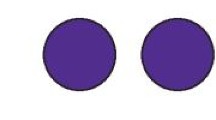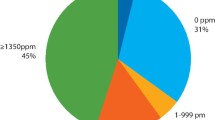Abstract
In today's global market, there is a very wide range of fluoride toothpastes varying in formulation, fluoride concentration, quality control of ingredients and manufacture, and some products are transported, stored and sold to consumers in countries far removed from where they are made. The competitiveness of the toothpaste market has driven the major manufacturers to offer an increasing and frequently changing variety of formulations to support claims of caries prevention, tooth whitening, sensitivity prevention, gum health and total oral health. However, the focus of this article is to consider how variations in formulation and the fluoride content of toothpastes might affect clinical efficacy for caries prevention. On the basis of presently available evidence, it would appear that the most reliable indicator of the effective fluoride content for a toothpaste formulation is the ionic fluoride concentration (F-) as parts per million (ppm) available immediately on brushing. However, as the recent international workshop on testing methods concluded, the clinical validation, acceptance and agreement of standardised testing methods by both manufacturers and international bodies would be required. If these technical difficulties can be overcome and all manufacturers standardised on this form of expression and did not declare the total, soluble or free ionic fluoride as calculated on a theoretical basis, then it would provide a more meaningful indicator that dental professionals, pharmacies and indeed the consumer could rely upon.
This is a preview of subscription content, access via your institution
Access options
Subscribe to this journal
Receive 24 print issues and online access
$259.00 per year
only $10.79 per issue
Buy this article
- Purchase on Springer Link
- Instant access to full article PDF
Prices may be subject to local taxes which are calculated during checkout
Similar content being viewed by others
References
Bibby B G. A test of the effect of fluoride-containing dentifrices on dental caries. J Dent Res 1945; 24: 297-303.
Muhler J C, Radike A W, Nebergall W H, Day H G. Effect of a stannous fluoride-containing dentifrice on caries reduction in children, II: caries experience after one year. J Am Dent Assoc 1955; 50: 163-166.
Whelton H P, Spencer A J, Do L G, Rugg-Gunn A J. Fluoride Revolution and Dental Caries: Evolution of Policies for Global Use. J Dent Res. 2019; 98: 837-846.
Lippert F. An Introduction to Toothpaste - Its Purpose, History and Ingredients. In van Loveren C (ed) Toothpastes (Monographs in Oral Science). pp 1-14. Basel: Karger, 2013.
Walsh T, Worthington H V, Glenny A M, Appelbe P, Marinho V C, Shi X. Fluoride toothpastes of different concentrations for preventing dental caries in children and adolescents. Cochrane Database Syst Rev 2010; DOI: 10.1002/14651858.CD007868.pub2.
Santos A P, Oliveira B H, Nadanovsky P. Effects of low and standard fluoride toothpastes on caries and fluorosis: systematic review and meta-analysis. Caries Res. 2013; 47: 382-390.
Public Health England. Delivering better oral health: an evidence-based toolkit for prevention. 3rd ed. 2014. Available online at https://www.gov.uk/government/publications/delivering-better-oral-health-an-evidence-based-toolkit-for-prevention (accessed April 2020).
SDCEP. Prevention and Management of Dental Caries in Children. 2nd ed. 2018. Available online at http://www.sdcep.org.uk/published-guidance/caries-in-children/ (accessed April 2020).
American Dental Association Council on Scientific Affairs. Fluoride toothpaste use for young children. J Am Dent Assoc 2014; 145: 190-191.
Levine R S. The action of fluoride in caries prevention. Br Dent J 1976; 140: 9-14.
McCann H G, Brudevold F. The cariostatic mechanisms of fluoride. In Kreshover S J, McClure F J (eds) Experimental Variables in Oral Disease. pp 103-128.Washington DC: American Association for the Advancement of Science, 1966.
Levine R S. The aetiology of dental caries - an outline of current thought. Int Dent J 1977; 27: 341-348.
Martinez-Mier E A. European Organisation for Caries Research Workshop: Methodology for Determination of Potentially Available Fluoride in Toothpastes. Caries Res 2019; 53: 119-136.
American National Standard and American Dental Association. Standard No. 130: Dentrifices - Requirements, Test Methods and Marking. Chicago: American Dental Association, 2013.
Chestnutt I G, Schäfer F, Jacobson A P, Stephen K W. The influence of toothbrushing frequency and post-brushing rinsing on caries experience in a caries clinical trial. Community Dent Oral Epidemiol 1998; 26: 406-411.
Ashley P F, Attrill D C, Ellwood R P, Worthington H V, Davies R M. Toothbrushing habits and caries experience. Caries Res 1999; 33: 401-402.
Zamataro C B, Tenuta L M, Cury J A. Low-fluoride dentifrice and the effect of postbrushing rinsing on fluoride availability in saliva. Eur Arch Paediatr Dent 2008; 9: 90-93.
Parnell C, O'Mullane D. After-brush rinsing protocols, frequency of toothpaste use: fluoride and other active ingredients. In van Loveren C (ed) Toothpastes (Monographs in Oral Science). pp 141-153.Basel: Karger, 2013.
Johnson M F. Comparative Efficacy of NaF and SMFP Dentifrices in Caries Prevention: A Meta-Analytic Overview. Caries Res 1993; 27: 328-336.
Bruun C, Givskov H, Thylstrup A. NaF and MFP Dentifrices with Different F Concentrations. Caries Res 1984; 18: 282-288.
Pearce E I F, Dibden G H. The Diffusion and Enzymic Hydrolysis of Monofluorophosphate in Dental Plaque. J Dent Res 1995; 74: 691-697.
Pearce E I F, Jenkins G N. The decomposition of monofluorophosphate by enzymes in whole human saliva. Archs Oral Biol 1977; 22: 405-407.
Tenuta L M A, Cury J A. Laboratory and human studies to estimate anticaries efficacy of fluoride toothpastes. In van Loveren C (ed) Toothpastes (Monographs in Oral Science). pp108-214. Basel: Karger, 2013.
Hanfland D, Wetzel W E. Fluoride release from toothpastes in the newly produced and stored states. Schweiz Monatsschr Zahnmed 1995; 105: 461-466.
Matias J B, Azevedo C S, do Vale H F, Rebelo M A, Cohen-Carneiro F. Fluoride stability in dentifrices stored in schools in a town of northern Brazil. Braz Oral Res 2015; DOI: 10.1590/1807-3107BOR-2015.vol29.0121.
Carrera C A, Giacaman R A, Muñoz-Sandoval C, Cury J A. Total and soluble fluoride content in commercial dentifrices in Chile. Acta Odontol Scand 2012; 70: 583-588.
Benzian H, Holmgren C, Buijs M, van Loveren C, van der Weijden F, van Palenstein Helderman W. Total and free available fluoride in toothpastes in Brunei, Cambodia, Laos, the Netherlands and Suriname. Int Dent J 2012; 62: 213-221.
Shibu T S, Sunitha S. Total and Free Fluoride Concentration in Various Brands of Toothpaste Marketed in India. J Clin Diagn Res 2015; DOI: 10.7860/JCDR/2015/13382.6578.
Thakkar V P, Rao A, Rajesh G, Shenoy R, Pai M. Fluoride content and labelling of toothpastes marketed in India. Community Dent Health 2015; 32: 170-173.
Jordan R A, Markovich L, Gaengler P, Zimmer S. Total and free fluoride concentrations of African dentifrices marketed in West Africa. Oral Health Prev Dent 2011; 9: 53-58.
Vorster L, Naidoo S, Stauf N, Holmgren C, Benzian H. Fluoride content of toothpastes available in South Africa. Community Dent Health 2018; 35: 186-192.
Holt R D, Murray J J. Developments in fluoride toothpastesan overview. Community Dent Health 1997; 14: 4-10.
Author information
Authors and Affiliations
Corresponding author
Rights and permissions
About this article
Cite this article
Levine, R. Fluoride in toothpaste - is the expressed total fluoride content meaningful for caries prevention?. Br Dent J 228, 795–799 (2020). https://doi.org/10.1038/s41415-020-1540-8
Published:
Issue Date:
DOI: https://doi.org/10.1038/s41415-020-1540-8
This article is cited by
-
Formulation and fluoride content of dentifrices: a review of current patterns
British Dental Journal (2021)



